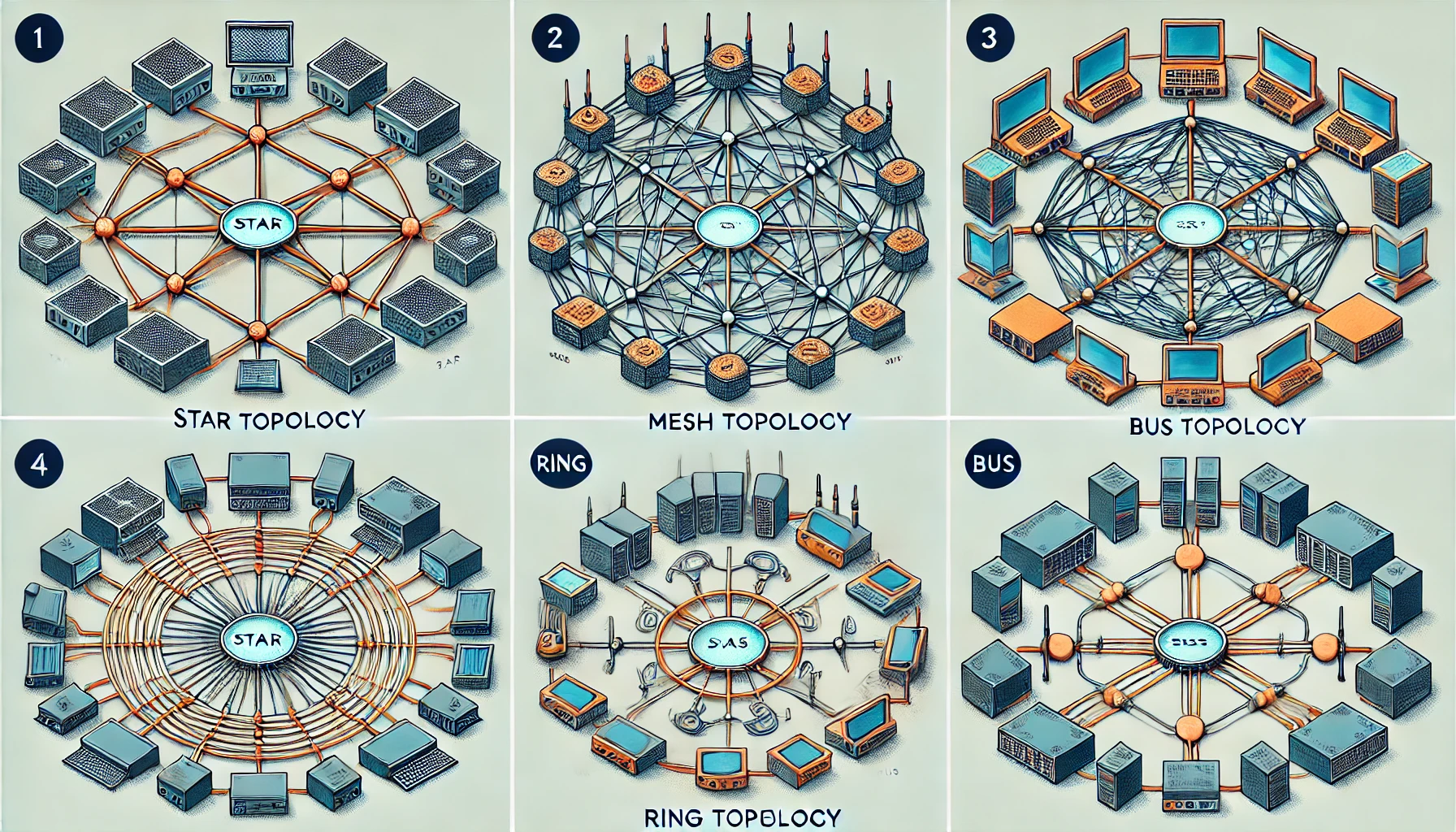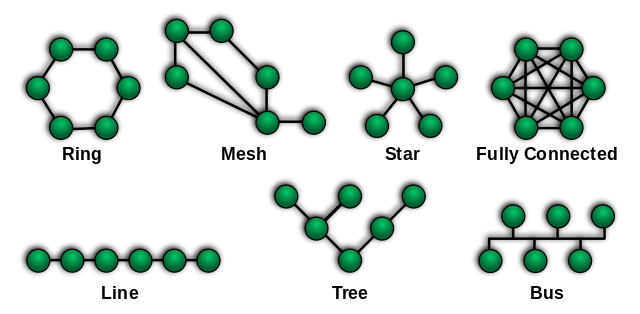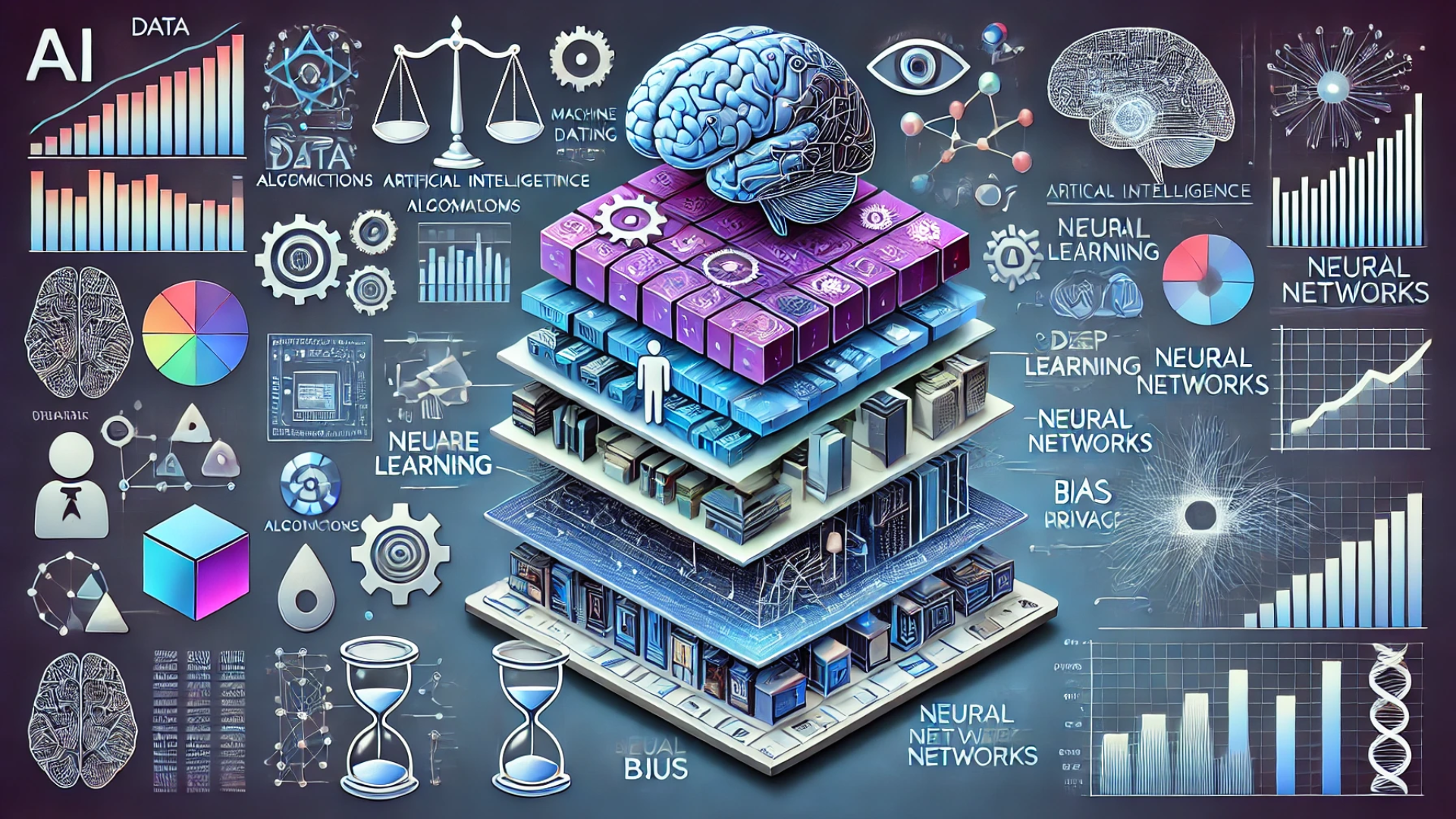
Network topology define how devices in a network are connected and communicate. Here’s a deep dive into four common topologies: Star, Mesh, Ring, and Bus.

Star Topology
Structure: In a star topology, all devices are connected to a central hub. Think of it like spokes on a wheel, with the hub being the center point.
Advantages:
- Easy to manage: Adding or removing devices is straightforward.
- Fault isolation: If one cable fails, the rest of the network remains unaffected.
- Centralized control: The hub acts as a controller, making network management easier.
Disadvantages:
- Single point of failure: If the hub goes down, the entire network is affected.
- Higher cost: More cables and hardware (the hub) can be expensive.
Mesh Topology
Structure: In a mesh topology, each device is connected to every other device. It’s like a web of connections.
Advantages:
- High reliability: Multiple paths for data to travel mean if one path fails, another can be used.
- Scalability: Easily add more devices without disrupting the network.
- Robustness: Excellent for critical applications needing constant uptime.
Disadvantages:
- Complex setup: A lot of connections mean a lot of cables, which can be complex to install and manage.
- Costly: More cables and network interfaces mean higher costs.
Ring Topology
Structure: In a ring topology, each device is connected to two other devices, forming a circular data path.
Advantages:
- Efficient data transmission: Data travels in one direction, reducing the chance of collision.
- Simple installation: Fewer cables compared to a mesh topology.
Disadvantages:
- Single point of failure: If one device or cable fails, the entire network can go down.
- Troubleshooting: Identifying the failure point can be difficult.
Bus Topology
Structure: In a bus topology, all devices share a single communication line or cable. It’s like a straight-line highway with exits for each device.
Advantages:
- Cost-effective: Requires less cable than star or mesh topologies.
- Easy installation: Simple to set up and extend.
Disadvantages:
- Limited cable length: The length of the cable limits the network size.
- Performance issues: Heavy traffic can slow down the network, and a failure in the main cable can bring down the entire network.
The End of Traditional Coding you need to know
Conclusion
Choosing the right network topology depends on your specific needs, including budget, scale, and reliability requirements. Star topology offers simplicity and centralized control, Mesh provides high reliability, Ring ensures efficient data transmission, and Bus is cost-effective but limited by cable length.

